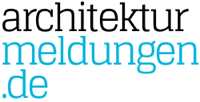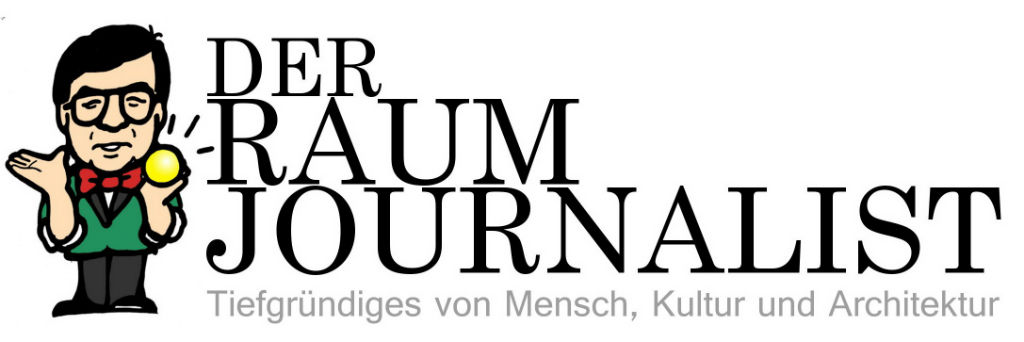Painted Architectures: Spanish post-conceptual Figuration. INTERVIEW with Ángel Mateo Charris
In autumn 2017, Berlin project space MEINBLAU showed “Gemalte Architekturen” (Painted architectures), an exhibition of seventeen Spanish artists. They are known in Spain as representing the Spanish post-conceptual figuration, and have been instrumental in renewing figurative painting over the past four decades. In their works, they use architecture and spatial geometry as a structural center: be it as the main motif, background, frame or as a symbolic element.
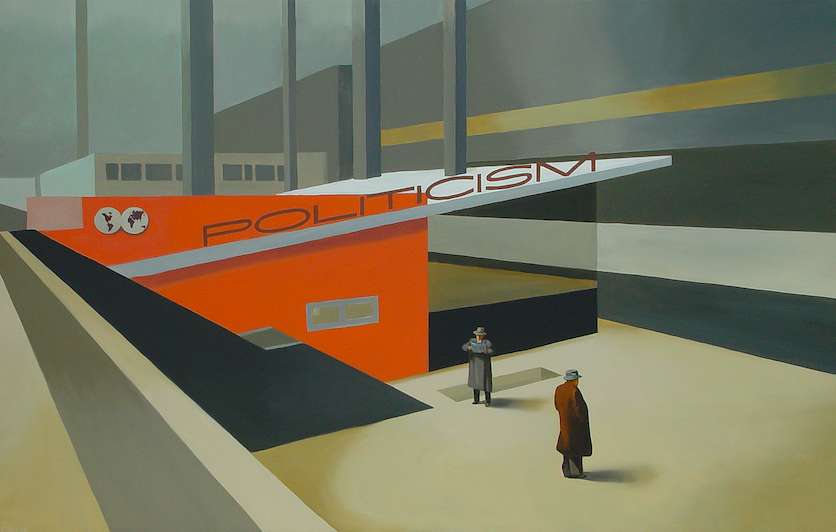
Politicism, 2005. Oil on canvas. 150 x 225 cm
Post-conceptual figuration is an artistic style that emerged in Spain in the early 1970s, a term coined by Paco de la Torre. The aim was to redesign figurative painting from the point of view of personal poetics. The group exhibition curated by Juan Cu├®llar and Roberto Moll├Ī was devoted to the role of the architectural and geometric image in the works of these artists in particular.
We are proud to be able to present you deconarch.com interview series with four of the post-conceptural Spanish artists within the following weeks: We were emailing with ├üngel Mateo Charris, Roberto Moll├Ī, Jorge Tarazona┬Ā and Paco de la Torre about their work, the meaning of architectural motives therein and the merits of painting.
all illus. (c) Angel Mateo Charris
www.charris.es
INTERVIEW
Architectural motives play an important role in your work. What sparks your interest in architecture?
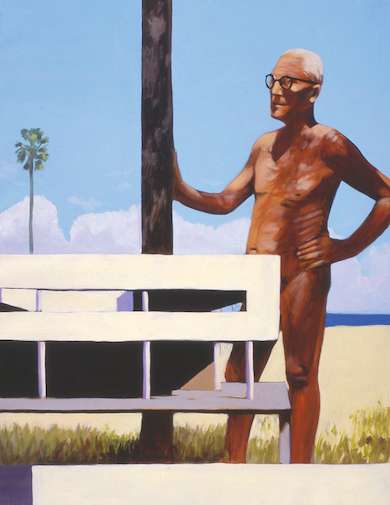
El arquitecto desnudo (Le Corbusier y Brassaï en Argelia), 2002. Oil on canvas. 100 x 81 cm.
As a painter who works with images of reality (past or present, from different sources and for different purposes) architectural motifs are elements that I use to contextualize, to situate ŌĆō many times in opposition to the natural, or as a strong symbolic element. Throughout the years I have used many images that also incorporate the trades of architecture (architects, workers, also building sites in process) as a representation of the cultural, of the human intervention in the world.
On the other hand, I have collaborated on multiple occasions with Spanish architect Mart├Łn Lejarraga in works that deal with the relationship between the disciplines of painting and architecture (murals, facades, and all kinds of projects) that we gathered in the exhibition Piel de asno at CAB of Burgos. In the centerpiece of that exhibition ŌĆō an installation with mobile screens ŌĆō I even used the portraits of many star architects (Foster, Koolhas, Sejima, Lloyd Wright, S├Īez de Oiza, Nouvel, etc., along with icons such as Gary Cooper in The Fountainhead).
Tell us a little bit about your work in general, what are you interested in?
I am a representational painter who tries to represent the time in which I live, with the multiplicity of levels that coexist at the same time: the real, the lived, the read, the seen-through the filter of other artists, so my interests are very extensive. The trip is at the center of many of my works, as a source of images, but also as an idea, as a concept, as a representation of the continuous flow of life itself.
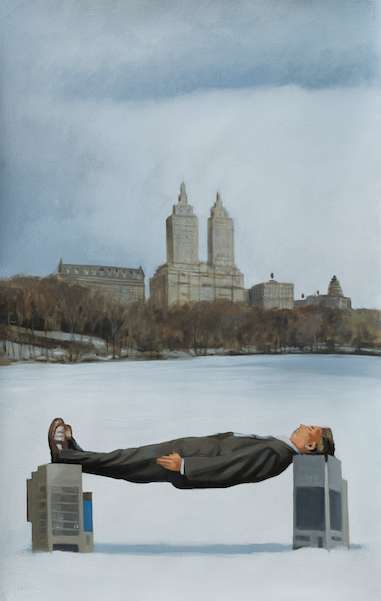
Anthony Gormley, 2010. Oil on paper. 102 x 60 cm
Over the years I think some lines of action of my work could be defined: an interest in social issues, the paradox of existence and the conflicts between cultures and the relationship of humankind with its environment; a reflection of the art world, the vanity and madness of the market, but also the greatness of the artist as an adventurer through multiple tributes and quotes, and another more internal vision, more metaphysical if you like, around the everyday and the little things. Everything and nothing.
What is your working process like? Is it a conceptual approach or do the works just ŌĆ£happenŌĆ£?
I work from photographs I took myself, especially on trips, which I mix, through basic digital collage, with elements from very different sources (magazines, old prints, encyclopedias, internet, advertising, cinema, etc.). Then the sketch done with the computer happens to become a painting (usually oil on canvas) and in that process things may change as they adapt to the new medium.
I usually start with an idea, so yes, the conceptual is at the beginning of everything, and I look for the elements that can help me tell it better.
Why painting? Which possibilities does painting offer to you?
Painting is a medium with infinite possibilities, ŌĆ£a gun loaded with the futureŌĆØ as a Spanish poet would say. In my case painting serves to limit a territory, to unify and hold together all layers of images and contents, taking them to a square universe where time and space play their own rules. It is much easier for me to work from painting, especially since many of the images I incorporate can, in turn, come from painting, illustration, logos, or two-dimensional things like printed material, textiles, digital sources ŌĆ”
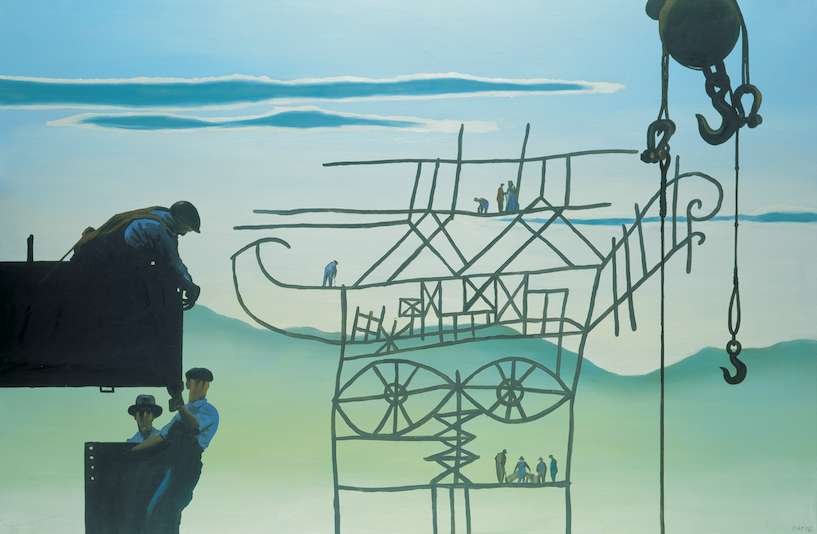
Andamiaje para una cabeza monumental, 1998. Oil on canvas. 130 x 195 cm
Are there role models, influences which inspire your work?
Yes, but there are so many that are ŌĆ£centrifugedŌĆØ into a somewhat ambiguous image. Let’s say, I consider myself part of a club where we all borrow something from everyone, a game in which tradition, history and the present coexist on the same level.
I have done tributes to artists (Edward Hopper, Leon Spilliaert, Rockwell Kent, Rodney Graham,19th century painting, Orientalists, Tansey, Hockney, Richter, Morandi, Chirico …), writers (Joseph Conrad, Dickens, Carson McCullers, Robert Walter, Stevenson …), filmmakers (Kaurism├żki, Jarmusch, Bu├▒uel, Ozu …), comic sketchers (Herg├®, Joann Sfar, Seth, Disney …), architects, so many, known and anonymous, that I do not consider myself anything monotheistic. Too many gods to pray to!
Ángel Mateo Charris, thank you for sharing your thoughts with us!




